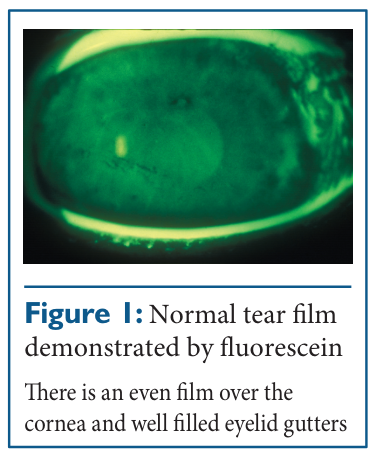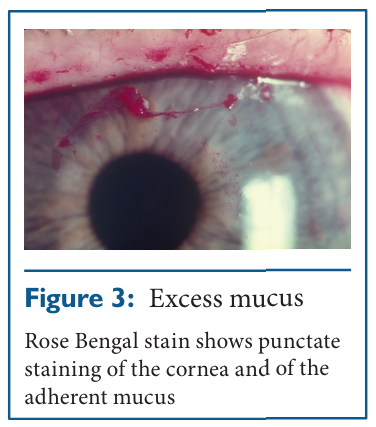Pavilion Publishing and Media Ltd
Blue Sky Offices Shoreham, 25 Cecil Pashley Way, Shoreham-by-Sea, West Sussex, BN43 5FF, UNITED KINGDOM
Dry eyes are a frequent problem, particularly in older people. Minor degrees of the condition are very common and may go unrecognised since symptoms vary from minor irritation to severe discomfort. A patient complaining of sore eyes and blurred vision when performing a visual task may need attention to a dry eye condition, rather than a change in glasses.
The tear film2 (Figure 1) is very important to the wellbeing of the eye and to the maintenance of vision. The tear film, and not the cornea, is actually the main optical surface of the eye. Tears are produced throughout day and night even when there is no particular demand and this is known as the resting rate of tear secretion. When demand is made on the tear glands, as occurs in eye irritation, then reflex secretion is brought into action.
The resting and reflex tear secretions have different anatomical sites of origin. The resting secretion comes largely from the accessory lacrimal glands, which are dotted around the conjunctival fornices and the reflex secretion comes from the lacrimal glands proper. The resting and reflex secretion processes can be interfered with differently by disease.

Dry eye ‘not simply a matter of not having enough tear secretions’
The tear film is quite a complex structure consisting of several separately identifiable layers. The most superficial of these is the thin oily layer which is secreted by the meibomian glands. The oily layer forms a barrier that is important in maintaining the stability of the tear film covering the cornea and conjunctiva and in preventing evaporation. The edge of the eye lid is also in an oily non-wettable condition and without this there would be nothing to stop the tears running down our faces all the time.
The next layer from the surface is the watery layer of the tear film. This watery fluid contains various salts and proteins in solution and these are derived from the bloodstream through the process of secretion in the lacrimal glands. Thus, the tear film contains most of the constituents that are found in the blood plasma, but in a dilute form. Important amongst the proteins in the tear film are those that are concerned with resistance to infection. One protein that is unique to the tear film is lysozyme, an enzyme that dissolves the protein coat of bacteria. The blood proteins concerned with resistance to infection are also present; the γ-immunoglobulins.
Under the watery layer of the tear film is the mucous layer, which forms the interface between the tear film and the cell surfaces of the corneal and conjunctival epithelia. The mucus content in this deepest layer is secreted by the goblet cells of the conjunctival epithelium and recently the epithelial cells themselves have been noted to secrete a mucus of their own.
The complex nature of the tear film, with the various different sources of origin of its several constituent parts makes it a delicate structure that is vulnerable to a variety of disturbances and the dry eye is not simply a matter of not having enough tear secretions. The lysozyme content is particularly liable to be an early casualty in dry eye, increasing the risk of infection.
Dr Nicholas Phelps Brown, Consultant Ophthalmologist, The Old Rectory, Coln St Dennis, Cheltenham, GL54 3JY.





